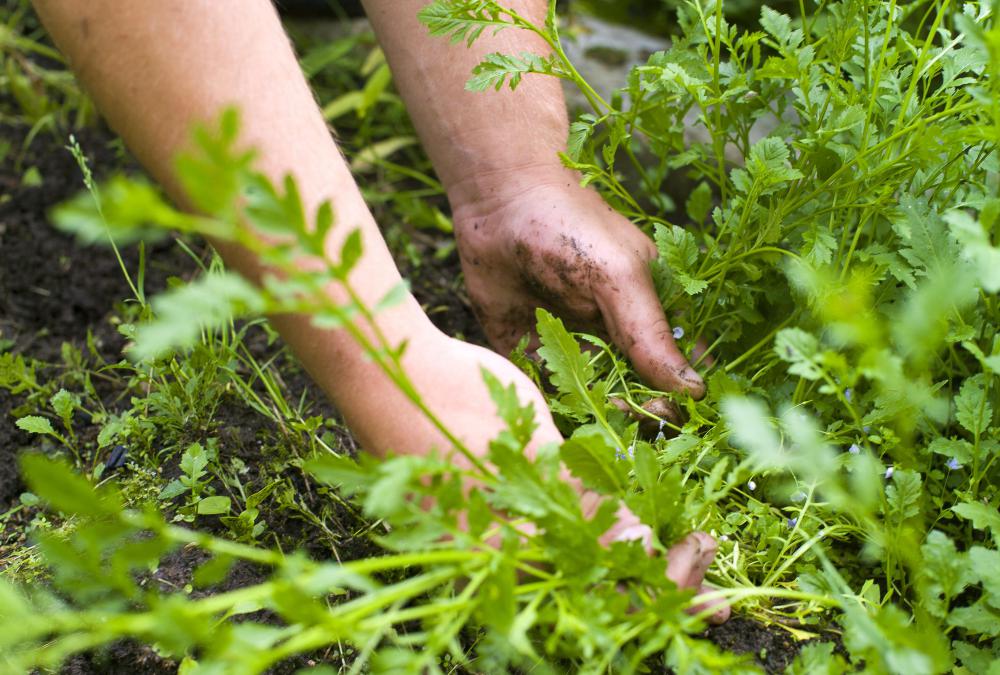At WiseGEEK, we're committed to delivering accurate, trustworthy information. Our expert-authored content is rigorously fact-checked and sourced from credible authorities. Discover how we uphold the highest standards in providing you with reliable knowledge.
What is Malva?
Malva is a genus of approximately 30 species of plants known as mallows that are found in the Malvaceae family. Some are perennials that are grown as ornamental plants. Other species are annuals or biennials and, in addition, are invasive weeds, particularly in the Americas and Australia. Mallows have been used as food and medicine by humans in various cultures since 6000 BC. Other plants known as mallows are found in other genera of this family.
Perennial flowers from this family include the common mallow, Malva sylvestris, a species that has been bred to produce several varieties used as garden flowers. The cultivar known as Braveheart tree mallow was the Perennial of the Month in July 2005. It grows to between 3 and 5 feet (0.9 and 1.5 m) high, and produces 2-inch (5 cm) mauve or pink flowers with dark veins. Other popular cultivars include Zebrinus and Marina, which both feature purple stripes, on pink or violet-blue flowers, respectively. These type of plants prefer full sun and well-drained soil.
The hollyhock mallow, or Malva alcea, is another perennial mallow grown in gardens. This species is drought-tolerant in the Northeast and Midwest. It also prefers full sun.

In contrast, Malva neglecta, also known as the common mallow, along with little mallow, or Malva parviflora, are invasive weeds on several continents. Both of these species are also known as cheeseweed, because the small fruit are in the shape of a cheese wheel. They can be distinguished by the size of the plants and flowers, and the appearance of the fruit.
The common mallow is prostrate, while the little mallow can grow up to 6.5 feet (2 m) tall. Its flowers are larger, and its fruit are smooth and not wrinkled, like those of the little mallow. Both species are found in nearly every state of the U.S., much of Canada, and all of the Australian states. They are generally annuals or biennials, but can live as perennials for short periods.
Cheeseweeds are extremely difficult to eradicate once they have infested a field or landscape. They are one of the few weeds that are not killed by glyphosphate or even by flaming. The seeds can remain dormant in the soil for up to 100 years. Seeds capable of producing plants were recovered from adobe bricks 200 years old in Mexico. Additionally, the plants quickly grow a deep taproot that is very difficult to remove from the soil.
It is advised to pull the plants when they are young, ideally with four leaves. If the plants have grown large, one should use a hoe or cultivator to sever the root beneath the soil surface. When mowers are used, the cheeseweeds will just grow back. The broadleaf herbicide 2,4-D has some effect on young plants. A thick layer of mulch will prevent the seeds from germinating.
These weeds have become more of an agricultural problem with the increase in fields of crops that are maintained without tilling. Large numbers of these plants can reduce crop yields. Also, they can harbor many pathogens and insects that affect crops. This can also be an issue in gardens.
Cheeseweeds are an alternate host for the rust that infects hollyhocks, a closely related species. Mallows grow quite well with colonies of rust on their leaves. Hollyhock plants, however, are greatly debilitated when they are colonized by hollyhock rust. For this reason, it is strongly recommended, when one grows hollyhocks, to remove any mallows in the area.
AS FEATURED ON:
AS FEATURED ON:











Discuss this Article
Post your comments